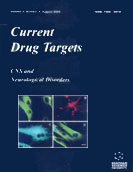Abstract
Receptor for advanced glycation endproducts (RAGE), a member of the immunoglobulin superfamily, is a multi-ligand, cell surface receptor expressed by neurons, microglia, astrocytes, cerebral endothelial cells, pericytes, and smooth muscle cells. At least three major types of the RAGE isoforms (full length, C-truncated, and N-truncated) are present in human brains as a result of alternative splicing. Differential expression of each isoform may play a regulatory role in the physiological and pathophysiological functions of RAGE. Analysis of RAGE expression in non-demented and Alzheimers disease (AD) brains indicated that increases in RAGE protein and percentage of RAGE-expressing microglia paralleled the severity of disease. Ligands for RAGE in AD include amyloid β peptide (Aβ), S100/calgranulins, advanced glycation endproductmodified proteins, and amphoterin. Collective evidence from in vitro and in vivo studies supports that RAGE plays multiple roles in the pathogenesis of AD. The major features of RAGE activation in contributing to AD result from its interaction with Aβ, from the positive feedback mechanisms driven by excess amounts of Aβ, and combined with sustained elevated RAGE expression. The adverse consequences of RAGE interaction with Aβ include perturbation of neuronal properties and functions, amplification of glial inflammatory responses, elevation of oxidative stress and amyloidosis, increased Aβ influx at the blood brain barrier and vascular dysfunction, and induction of autoantibodies. In this article, we will review recent advances of RAGE and RAGE activation based on findings from cell cultures, animal models, and human brains. The potential for targeting RAGE mechanisms as therapeutic strategies for AD will be discussed.
Keywords: receptors, amyloid-beta peptide, proteins, amphoterin, neuroinflammation, neurodegeneration, cerebral amyloid angiopathy, alzheimers disease
 5
5

















